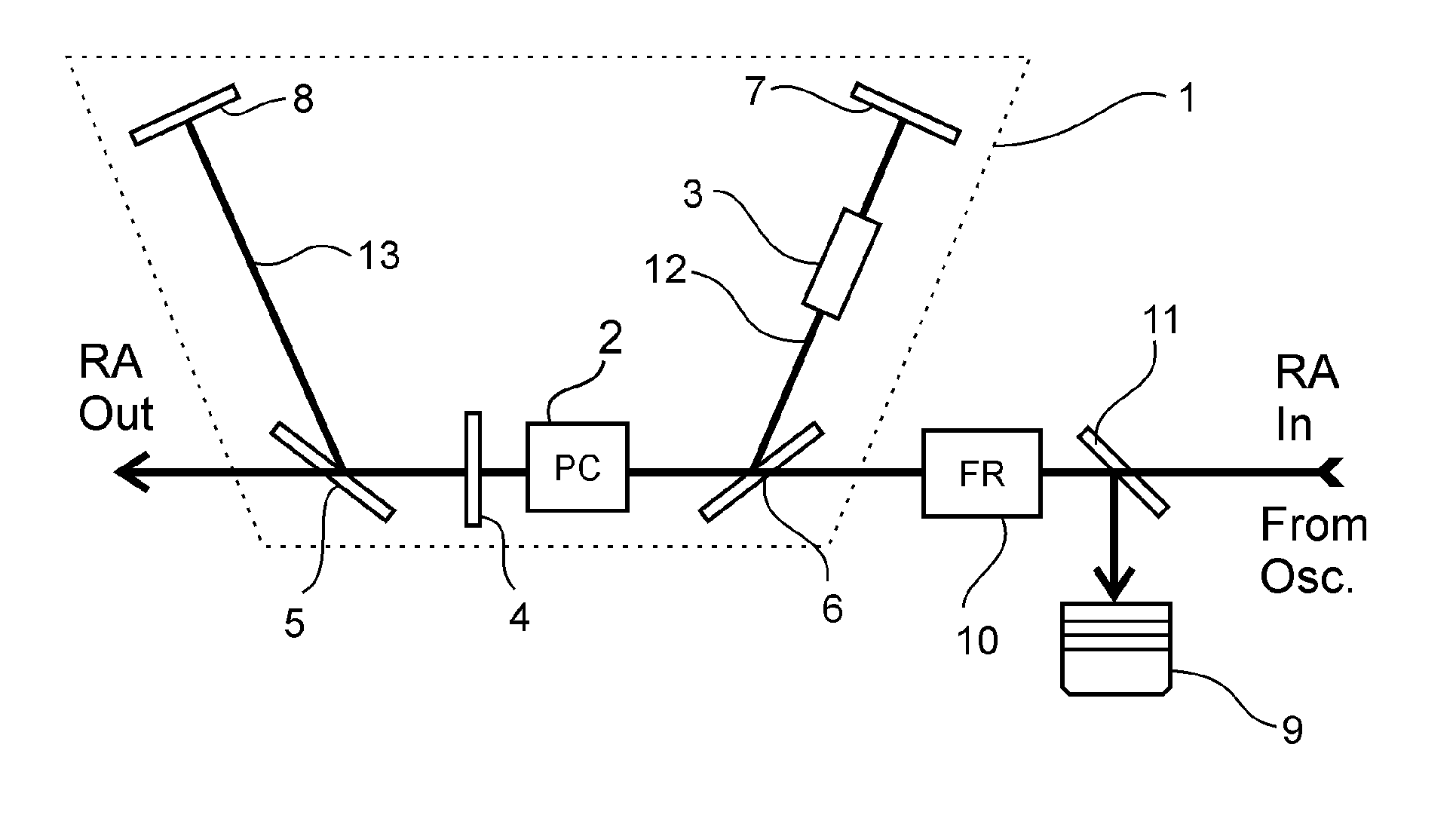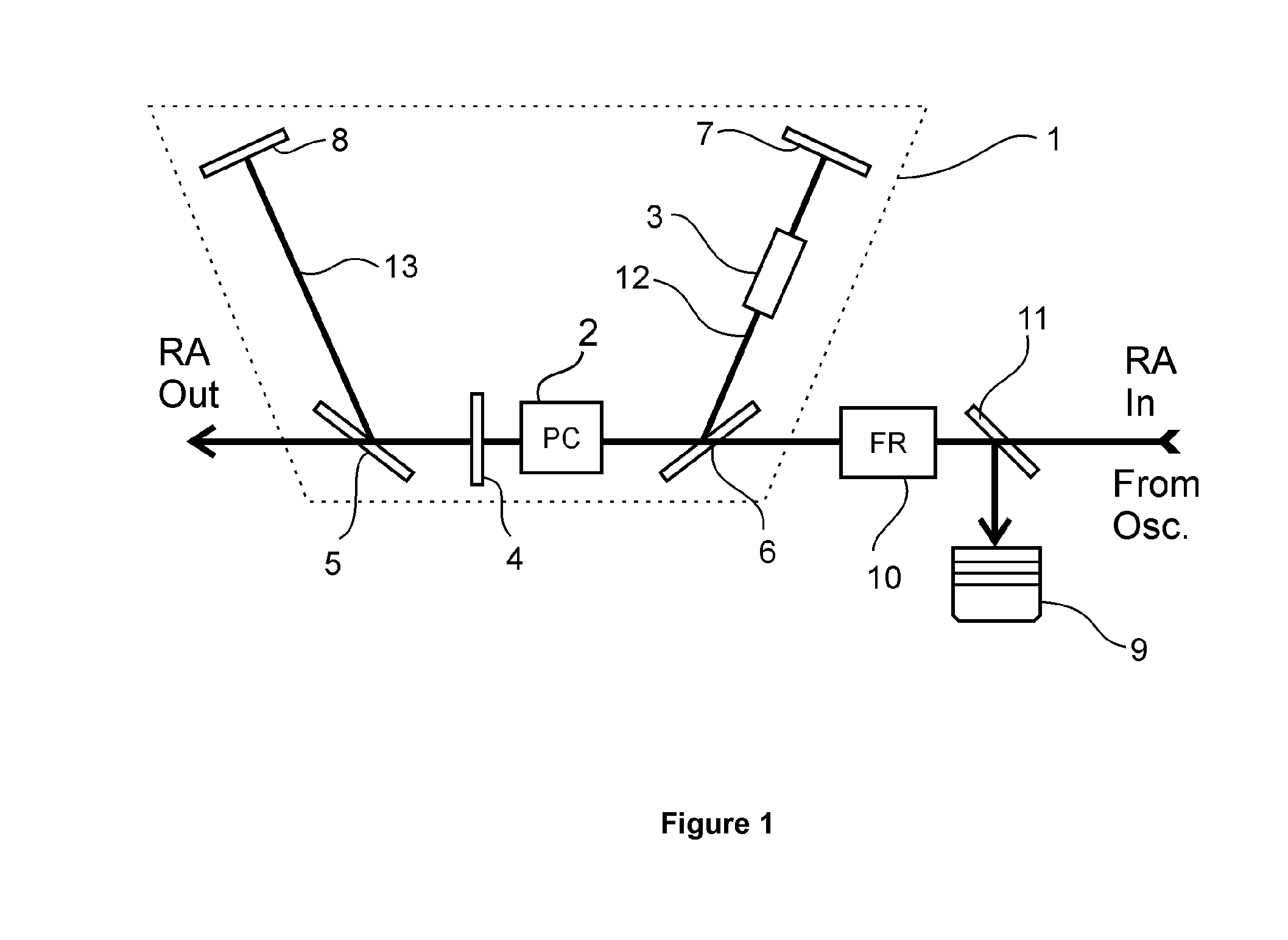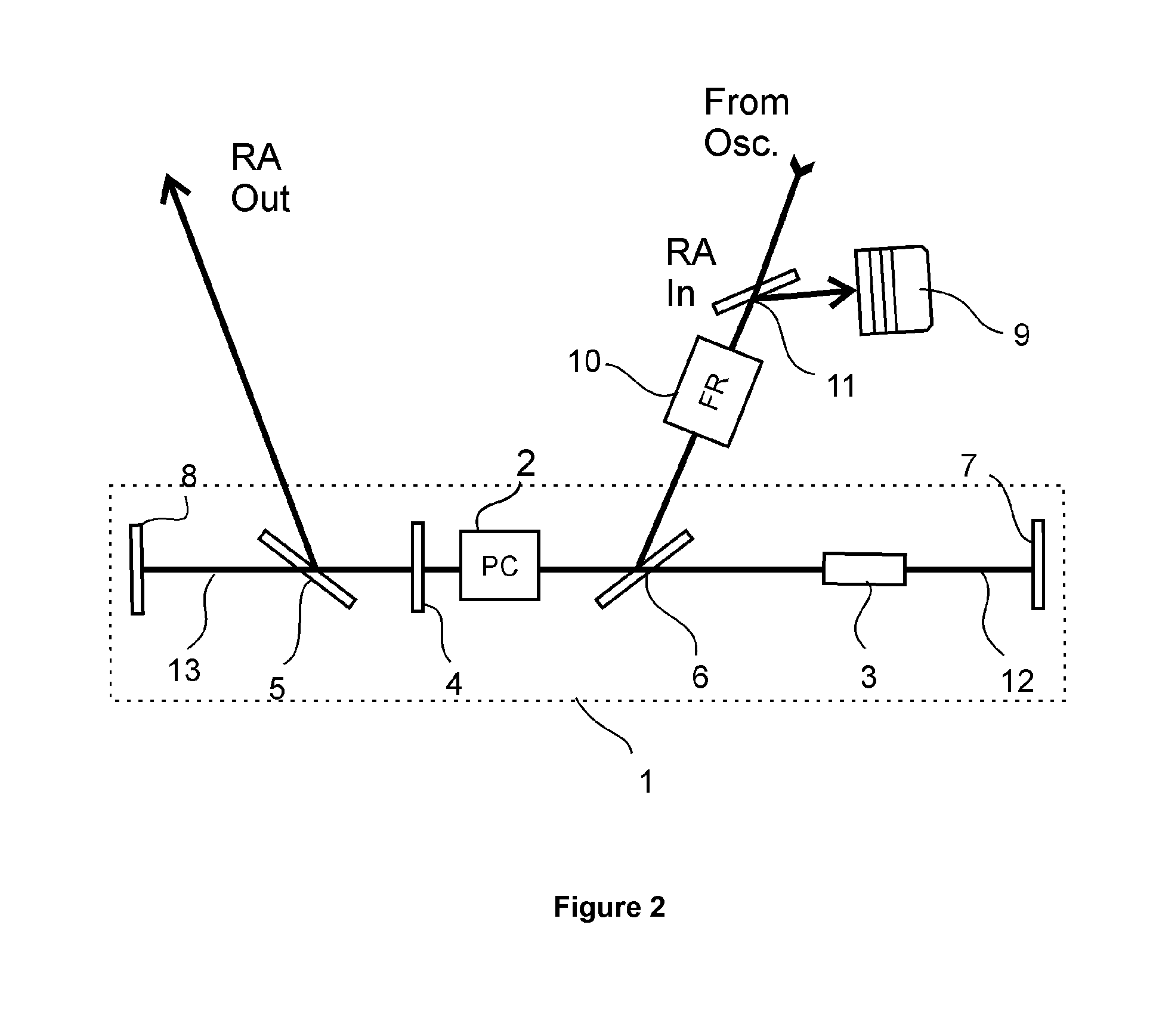Regenerative optical amplifier for short pulsed lasers, a laser source and a laser workstation
a regenerative optical amplifier and laser technology, applied in the direction of laser optical devices, laser details, optical resonator shape and construction, etc., can solve the problems of increasing the prime cost of the regenerative amplifier, the rotation or change of the polarization state of the seed wave, and the inability of the electro-optical element to work
- Summary
- Abstract
- Description
- Claims
- Application Information
AI Technical Summary
Benefits of technology
Problems solved by technology
Method used
Image
Examples
example 1
[0029]As illustrated in FIG. 1, in this example of a preferred embodiment, the RA input, the Pockels Cell (2), polarizers (5, 6), the half-wave plate (4) and the RA Out are arranged essentially in a row. For the sake of simplicity, herein and further, the polarization of the input seed pulse train will be referred to as ‘p polarization’ and a switched polarization, which is essentially perpendicular to the p polarization, will be called ‘s polarization’.
[0030]The first polarizer (5), which is arranged on the output side with respect to the PC unit (2), is oriented such, that it reflects the s polarization. Whenever the PC unit (2) is not activated and is not changing the polarization state of seed pulses coming from the oscillator, the polarization state of the seed pulse is rotated only by the half-wave plate from p to s and then reflected by the first polarizer (5) towards the second optical path (13).
[0031]In this exemplary embodiment, when a seed pulse remains unamplified, RA op...
example 2
[0054]FIG. 2 illustrates another exemplary embodiment, wherein the RA cavity (1) is essentially of linear geometry. It should be understood that the optical paths (12, 13) can be of significant length and thus it might be required to arrange additional mirrors in said optical paths (12, 13) in order to fold the optical paths and make them more compact. The same is applicable to Example 1 and the optical layout illustrated in FIG. 1. The RA input and output sections are arranged such, that the seed pulses are coupled in the RA cavity (1) and the amplified pulses are out-coupled by reflection from the polarizers (5, 6).
[0055]In this exemplary embodiment, when a pulse is amplified, RA operation comprises following steps:
[0056]Additional pulse picker PC unit may be used when extremely high contrast pulses are required[0057]I. the seed pulse of p polarization reflects from the second polarizer (6) towards the Pockels cell (2);[0058]II. the polarization state is changed to s only by the h...
PUM
 Login to View More
Login to View More Abstract
Description
Claims
Application Information
 Login to View More
Login to View More - R&D
- Intellectual Property
- Life Sciences
- Materials
- Tech Scout
- Unparalleled Data Quality
- Higher Quality Content
- 60% Fewer Hallucinations
Browse by: Latest US Patents, China's latest patents, Technical Efficacy Thesaurus, Application Domain, Technology Topic, Popular Technical Reports.
© 2025 PatSnap. All rights reserved.Legal|Privacy policy|Modern Slavery Act Transparency Statement|Sitemap|About US| Contact US: help@patsnap.com



